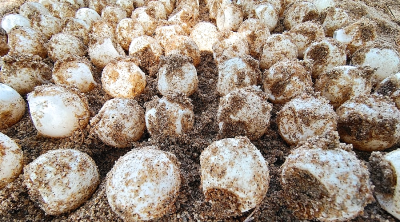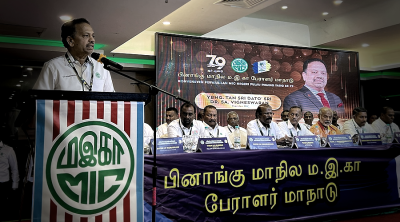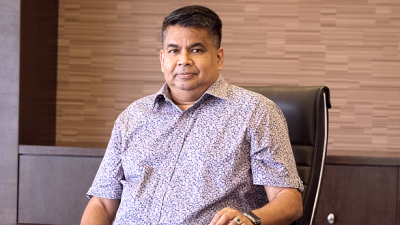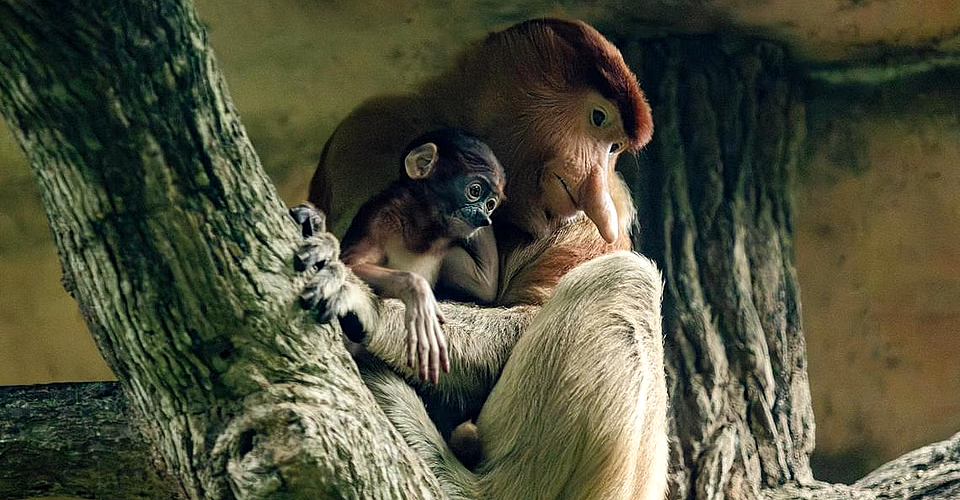
SINGAPORE: From Philippine pigeons with “bleeding hearts” to majestic Malayan tigers, Singapore has been helping the numbers of Southeast Asian species on the brink of extinction recover through breeding programs.
On April 3, The Straits Times reported that the Mandai Wildlife Group (MWG) will be sending one of the three Malayan tigers at Rainforest Wild Asia to Taipei Zoo to be paired with a young female tiger there.
This comes after MWG on Jan 15 sent 10 Negros bleeding-heart pigeons—which had been bred at Bird Paradise Singapore—to their native lands.
There were only 70 to 400 of them left in the central Philippine island provinces of Panay and Negros prior to that, according to the conservation group BirdLife International.
Such breeding efforts are key in ensuring that species threatened with extinction do not disappear off the face of the earth.
But experts ST spoke to said ensuring the longevity of animal species in the wild requires much more than just breeding them in zoos.
Conservation efforts also include protecting and safeguarding the region’s natural environments, as well as educating various communities, organisations and even the authorities on how best to care for these delicate animals in their native habitats, said a spokeswoman for MWG.
Getting the public to appreciate and coexist with wildlife is also critical to reduce human-wildlife conflicts, she said, adding that Mandai’s conservation programmes also include such efforts.
Associate Professor Darren Yeo, head of the NUS Lee Kong Chian Natural History Museum, said conserving wildlife species in Southeast Asia is vital in preserving the region’s natural heritage.
The Lee Kong Chian Natural History Museum is under the Faculty of Science at the National University of Singapore.
In fact, many wildlife species, such as the southern river terrapin, Sumatran rhino and orangutan, are only found in Southeast Asia.
Wildlife also plays many other important roles that benefit humanity, said NTU Assistant Professor Zeng Yiwen.
“Some species play important ecological roles like in seed dispersal, pollination or controlling prey populations—maintaining the health of the natural ecosystems,” said Prof Zeng, who conducts research on conservation, climate change and communities at the Asian School of the Environment.
For example, a past study found that fruit bats known as flying foxes—which are native to Singapore—are one of the most efficient natural pollinators of durian trees.
Despite its size, Singapore is a biodiversity hot spot with a wide range of ecosystems, from forests to wetlands and coastal ecosystems, said Ms Uma Sachidhanandam, director of conservation and science at World Wide Fund for Nature (WWF) Singapore.
“As a key member of international agreements on the environment, Singapore has the potential to influence large-scale conservation through well-established practices.
“Our legislation and on-the-ground efforts—such as nature-based coastal protection solutions and initiatives to address environmental fragmentation—can serve as strong models for the region to follow,” she added.
Urgency for action
Globally, wildlife species are on the decline and experts have said the world is in the midst of its sixth mass extinction.
In 2024, the WWF Living Planet Report said the average size of monitored wildlife populations globally had shrunk by 73 per cent, and continues to decline today. This was based on almost 35,000 population trends and 5,495 species of amphibians, birds, fish, mammals and reptiles.
Nearly 50,000 species globally are threatened with extinction, according to international scientific assessments, and this number continues to climb every year.
The report also found that the Asia-Pacific region ranks third globally in species decline, with a 60 per cent drop in combined terrestrial and freshwater populations between 1970 and 2020.
Wildlife in Asia has also experienced the steepest and most extensive decline over the past century.
But many of the species threatened with extinction in Southeast Asia may slip under the radar, compared with more charismatic species.
Said Prof Zeng: “Biodiversity conservation efforts tend to have a bias towards charismatic animals like tigers, lions, and cute ones like koalas… this means that some species and groups of species may get overlooked and may receive less conservation attention and funding.”
Some of the species that have benefited from Mandai’s breeding programs are those that are not as well known as, for example, the beasts that roam Africa’s savannahs.
They include the Rote snake-necked turtle, oriental pied hornbill and Malayan tapir.
Prof Zeng said the threats that fauna in the region primarily face include habitat loss brought about by deforestation and land-use change, as well as over-exploitation through resource extraction and the wildlife trade.
NUS conservation scientist Roman Carrasco said Southeast Asia is globally important for biodiversity and this is something the international community is aware of.
Southeast Asia is home to about 20 per cent of the world’s wildlife population.
Associate Professor Carrasco, who is also deputy head of the university’s Department of Biological Sciences, added: “We are sitting on a biodiversity treasure of incalculable value, and we have a stewardship responsibility that goes beyond our region to all humanity and across generations to come.”
He said that Singapore can, through partnerships with other Asean nations, make a large difference for species that are on the brink of extinction.
“In a way, this means giving back to the region and helping protect the biodiversity that our land constraints did not allow us to,” said Prof Carrasco. “What we do in Southeast Asia will have large repercussions on global biodiversity.”
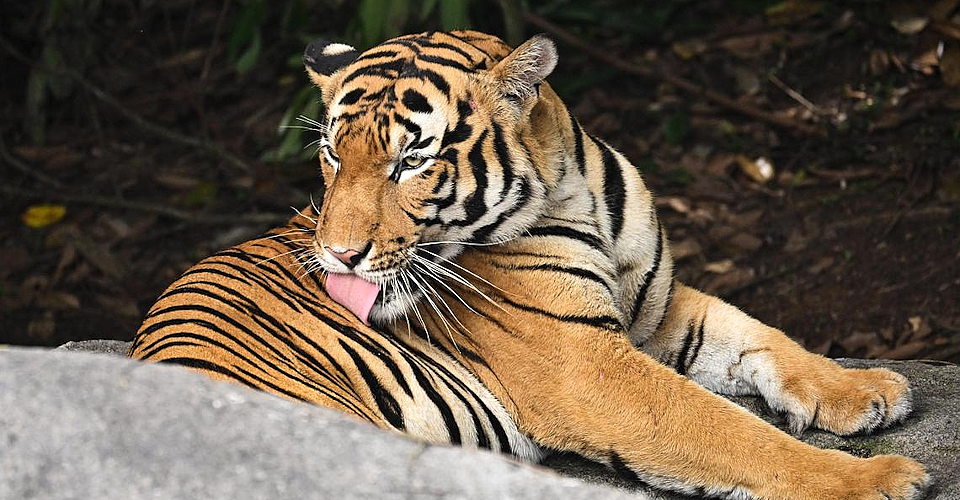
Singapore’s efforts
Through Mandai Nature, the conservation arm of MWG, support and funding of about $4.5 million annually have been invested in more than 40 projects in Southeast Asia, including Singapore.
This has contributed to targeted conservation action for more than 50 threatened Southeast Asia species, said Dr Sonja Luz, chief executive of Mandai Nature.
These projects may involve direct efforts through breeding, or indirect means like assisting with habitat protection and restoration, and working with local communities and indigenous groups to benefit economically from nature conservation.
Dr Luz said that while some of the progeny eventually do get reintroduced back into the wild, a large number of them will instead get placed in a facility under human care as assurance populations.
Assurance, or insurance, populations, are “safety nets” for species facing severe threats in the wild, allowing conservationists to maintain a viable population under human care.
These populations safeguard threatened species against extinction to increase the chances of the species’ survival in the long term, while threats in their habitats are being dealt with.
A portion of revenue generated from tickets and purchases made with MWG, which operates five wildlife parks in Singapore, also gets channeled into its conservation causes.
Dr Luz added that conservation projects must first prioritize the conservation and protection of any animal’s native environment.
Additionally, countries involved would need to be able to provide the animals with the appropriate welfare and health and disease management before and after repatriation.
“Ensuring that the environment can support the species and maintain ecological balance is crucial for the safety of both wildlife and people,” Dr Luz said.
Partnering with various zoos and wildlife groups around the world, MWG assists in the education of husbandry and care practices, alongside breeding efforts known as head-starting programs, as well as environmental and habitat protection.
Head-starting is a conservation technique for threatened species, where the young are raised in human care until they reach a size or developmental stage where they are less vulnerable to predators and environmental threats, before being released back into the wild, said Dr Luz.
A key consideration in such programs is the establishment of sustainable populations under human care.
This means maintaining healthy, genetically diverse populations of threatened species in zoos and aquariums worldwide.
Today, MWG participates in more than 160 of such globally managed projects.
“Genetic diversity is necessary for all species—both in the wild and in human care—to adapt to changes in their environment, resist diseases and prevent genetic defects,” said Dr Cheng Wen-Haur, deputy CEO of life sciences and operations at MWG. Dr Cheng is also chief life sciences officer at MWG.
Closer to home, Singapore has also undertaken efforts to make the country more hospitable for wildlife.
Besides preserving its nature reserves, Singapore is adopting a multifunctional approach to make urbanized environments suitable for biodiversity as well, such as through the rewilding of roadsides and greening of residential areas, Prof Carrasco said.
The National Parks Board (NParks), for instance, has a nature conservation masterplan, which outlines its efforts in conserving flora and fauna in Singapore.
This includes the conservation and enhancement of key habitats, like nature reserves, nature ways and green areas like Jurong Lake Gardens. This has provided a more conducive environment for animals like the Raffles’ banded langur to thrive.
Singapore is also a stronghold for the straw-headed bulbul, a songbird poached to near extinction in other countries in Southeast Asia.
NParks also conducts long-term monitoring of ecosystems and species, and active community outreach to build public interest and involvement in biodiversity conservation.
Wildlife rescue group Acres has also been heavily involved in the rescue of injured, orphaned or displaced animals around Singapore.
Some animals it has rescued and nursed include the Sunda pangolin, slow loris, white-bellied sea eagle and reticulated python. It has also successfully hand-raised civets, bats, whistling ducks and even scops owls.
In collaboration with breeding programs elsewhere, it has also treated and repatriated Malaysian giant turtles, Asian pond turtles, elongated tortoises, Indian star tortoises and a black marsh terrapin.
These animals were either found stranded on the Republic’s turf, or have been rescued from illegal wildlife trade since 2017.
WWF Singapore has also been actively tackling the issue of illegal wildlife trade—a major driver of pangolin and straw-headed bulbul population decline across their native range—through its Cyber Spotter Program.
This program trains volunteers to identify and report suspicious online listings of various threatened species.
The conservation group has also been actively involved in projects in neighboring countries, including the protection and conservation of elephants in Thailand, tigers in Malaysia and whale sharks in the Philippines.
Moving forward
Singapore is in a good position to help scale up regional conservation efforts, said Dr Shawn Lum, a senior lecturer at NTU’s Asian School of the Environment.
“To truly impact wildlife conservation at scale, we have to play a role in a larger regional context. We can do this through education and capacity building, financing, communications, outreach or by supporting regional conservation efforts,” Dr Lum said.
On the finance front, for example, Singapore can help to channel more funding to conservation efforts in the region, he said, pointing to Mandai’s regional conservation projects.
Dr Lum said: “Mandai (supports) the important work of the Asian Species Action Partnership and, through Mandai Nature, directly funds local and regional conservation work in the field. This includes getting endangered species like the orangutan to successfully reproduce in captivity.”
Prof Yeo said that, locally, greater protection and persistence of the remaining habitats of species need to be ensured, to continue supporting them in the wild, and those that have returned to the wild.
“The significance of losing any natural environment would be not only the corresponding loss of the populations in those environments, but also lost opportunity for spread and reintroduction of the species from elsewhere,” he said.
Its impact is further amplified if the habitat is unique and rare, like the Nee Soon forest in Singapore—the only freshwater swamp forest left in the Republic.
“If—and I hope it never happens—this one environment were to be lost, the impact would be very significant in terms of the loss of associated flora and fauna—some of which are found nowhere else in Singapore, and with at least one species found nowhere else in the world,” Prof Yeo said.
He also said that raising awareness of threats to nature can help people do their part to prevent biodiversity loss.
“For example, simply being aware of the threats posed by invasive species and illegal pet trade could contribute to alleviating the problem of illegal wildlife trade.”
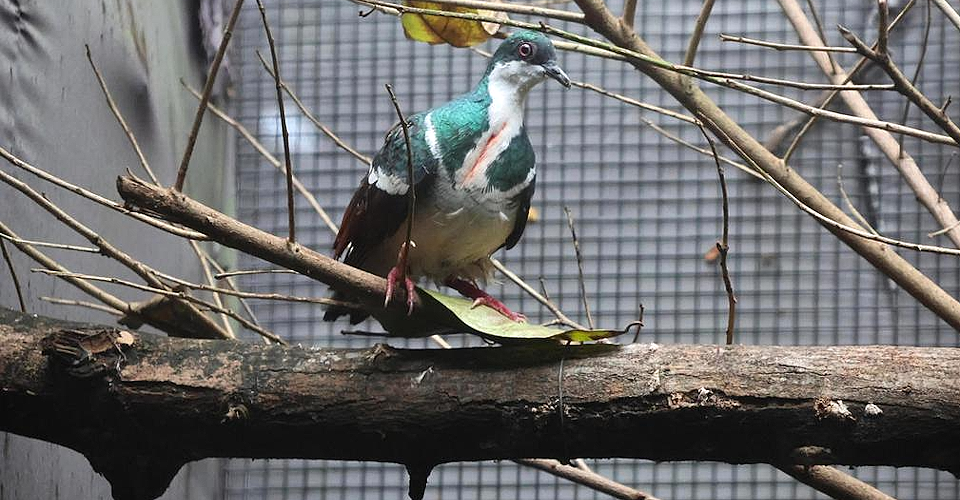
ADVERTISEMENT
ADVERTISEMENT







